Wait, People Actually Ate That? The Bizarre Genius of WWII Ration Recipes
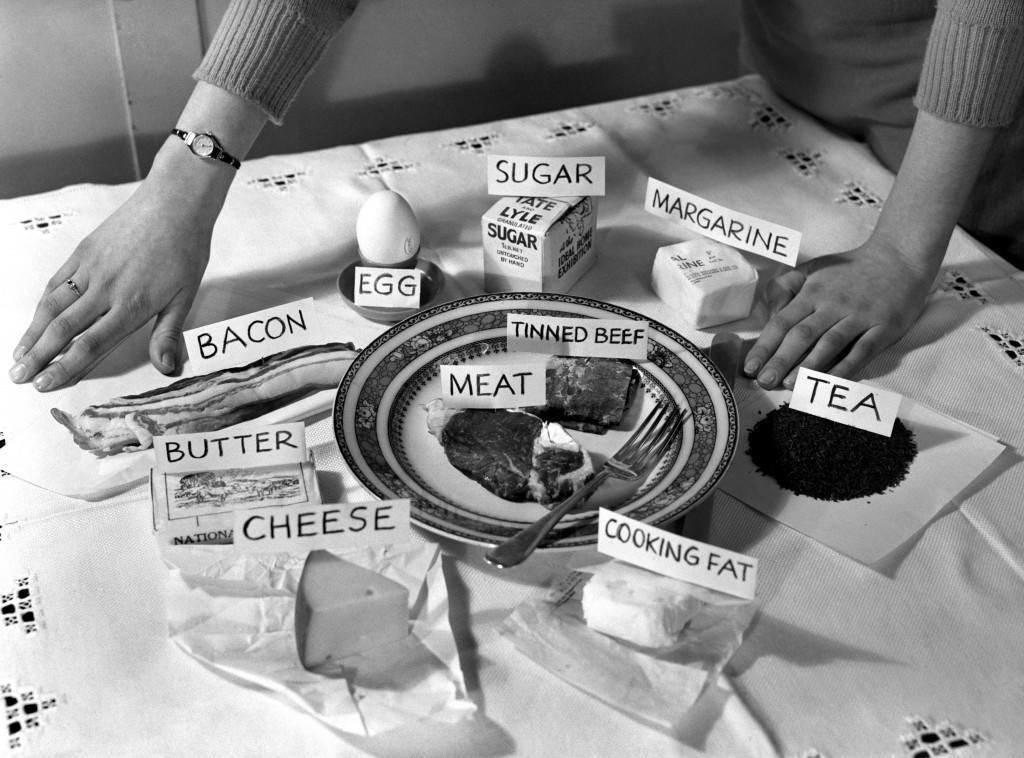
During World War II, food wasn’t just scarce — it was an ongoing battle. As cities went dark during air raids and bombs rattled kitchen walls, grocery shelves stood bare. Butter vanished. Sugar became a luxury. Eggs? Practically mythical. And still, families had to eat. Armed with powdered milk, root vegetables, and whatever scraps the ration book allowed, home cooks got to work. They stretched flavors, bent the rules, and turned desperation into innovation. These weren’t just recipes — they were survival stories served on a plate.
Vegetable Hotpot
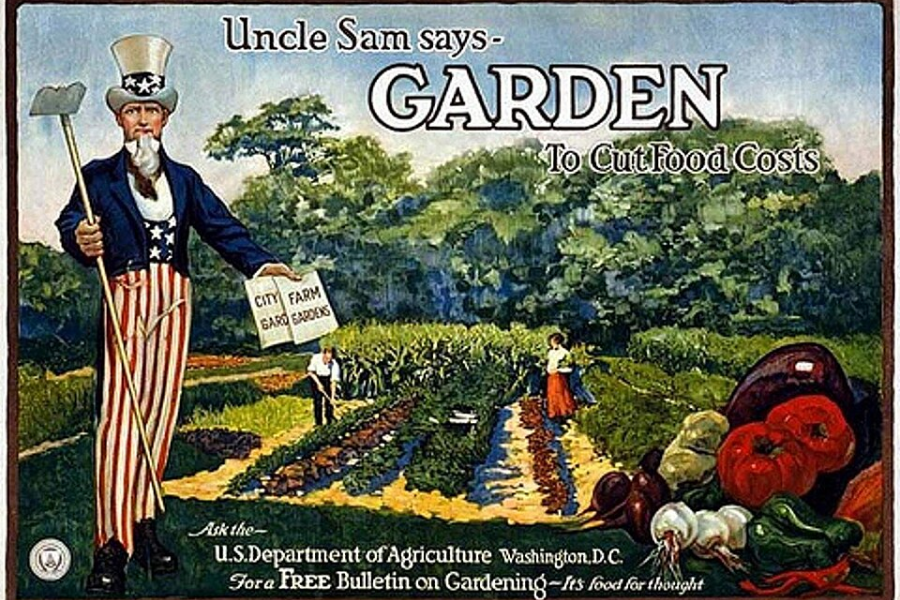
A one-pot dish of carrots, turnips, onions, and potatoes—stewed until tender, seasoned until tolerable, and served until people stopped asking “What’s for dinner?”
Meatless or with a sliver of leftover sausage, it simmered all day, feeding families on a shoestring and a prayer.
It wasn’t fancy, but it was warm, filling, and endlessly adaptable. The ultimate comfort food when your comfort was also rationed.
Did You Know? 🤓💡
Victory Gardens in the U.S. and the “Dig for Victory” campaign in the UK turned lawns into lunch. Citizens grew veggies at home to ease pressure on public food supplies—spuds, carrots, and cabbages replaced petunias as patriotic produce.
Woolton Pie
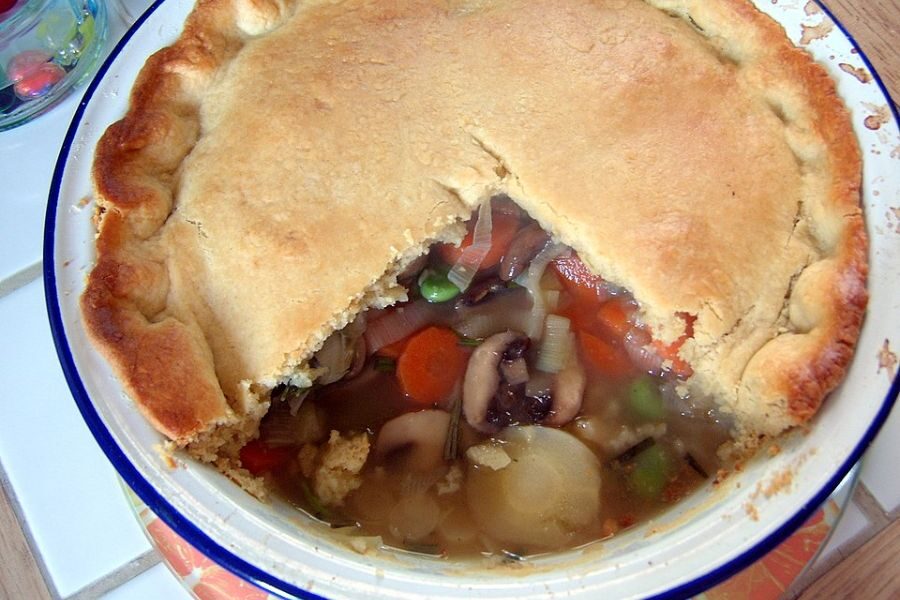
Named after Frederick Marquis, 1st Earl of Woolton, Britain’s Minister of Food in 1940, this wartime pie skipped meat entirely, leaning on vegetables like carrots, turnips, and parsnips instead.
The filling was simmered into a soft, vaguely nutritious mass, then layered under mashed potatoes pretending to be pastry. No actual crust, no actual joy.
It was designed to feed families with rationed produce and forced optimism, offering warmth, bulk, and the culinary equivalent of a stiff upper lip.
Did You Know? 🤓💡
Frederick Marquis made wartime rationing chic—carrot jam, powdered eggs, and all—while strutting in a three-piece suit like food shortages were fashion week.
Dried Beef in White Sauce
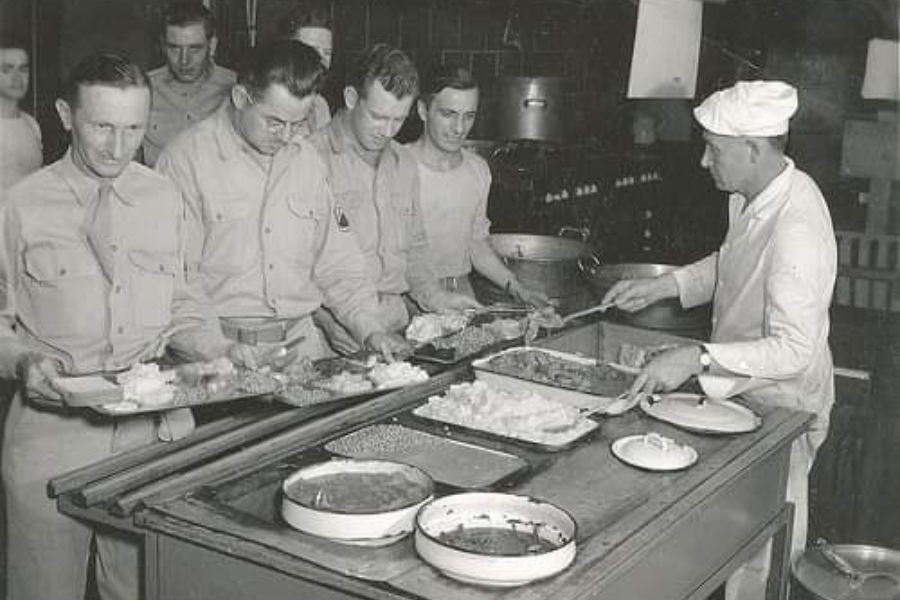
Creamed Chipped Beef, or “SOS”, was a simple dish of dried beef in a creamy white sauce, typically served on toast.
It became strongly associated with World War II because it was a common and easily prepared meal in the military due to the long shelf life of the ingredients.
The dish was a staple in military rations and a nostalgic comfort food for many veterans after the war.
Did You Know? 🤓💡
The creamed dried‑beef-in-white-sauce dish first appeared in the 1910 Manual for Army Cooks, making it military-issued long before WWII. Soldiers turned this bland, pantry-friendly classic into a rite of passage.
Carrot Pineapple Gelatin Salad
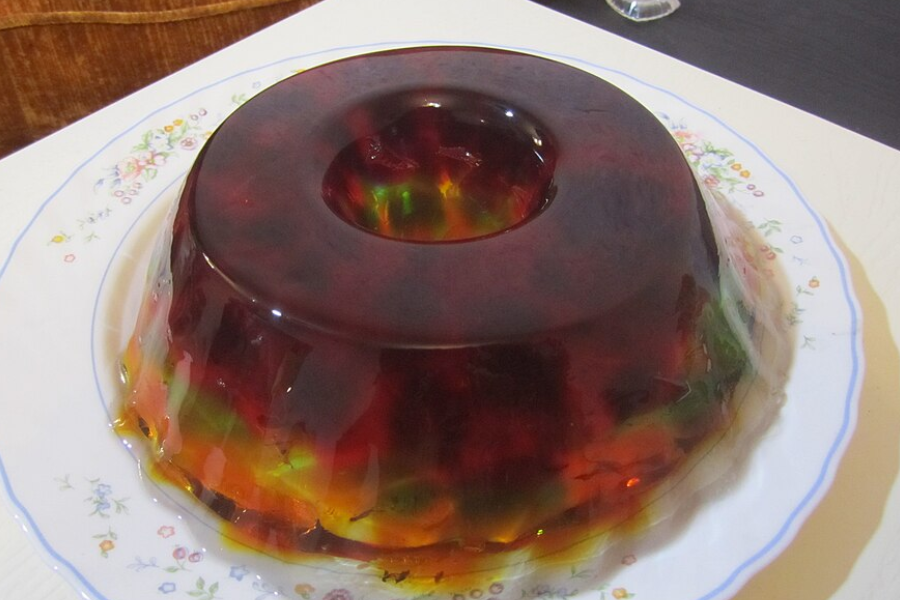
A patriotic Jell-O dish featuring grated carrots and canned pineapple suspended in a wobbly gelatin mold. Fruit salad? Technically. Dessert? Debatable.
Carrots added color and nutrients, pineapple brought sweetness, and the Jell-O made it dinner-party ready—by 1943 standards of what that meant.
Served cold and enthusiastically, it wiggled its way into countless potlucks and trauma-based memories. It was vitamin-rich and vibe-poor.
Did You Know? 🤓💡
Gelatin-based recipes like Carrot Pineapple Salad exploded in popularity during WWII because gelatin was cheap, shelf-stable, and made leftovers look like a party. Jell-O molds became the unsung heroes of the American dinner table.
Peanut Butter and Lettuce Sandwiches

A lunchbox staple born of ration-friendly protein. This combo paired salty peanut butter with crunchy iceberg lettuce for texture and a mild identity crisis.
Bread was often homemade or suspiciously sturdy. The contrast of creamy spread and watery leaves left people wondering, “Is this health food or punishment?”
Oddly refreshing and weirdly nutritious, it was portable, no-cook, and just odd enough to make kids suspicious of all sandwiches forever.
Did You Know? 🤓💡
During WWII, peanuts became the protein-packed MVP of American kitchens. With meat rationed, peanut butter showed up in everything from sandwiches to sauces.
Potato Pastry
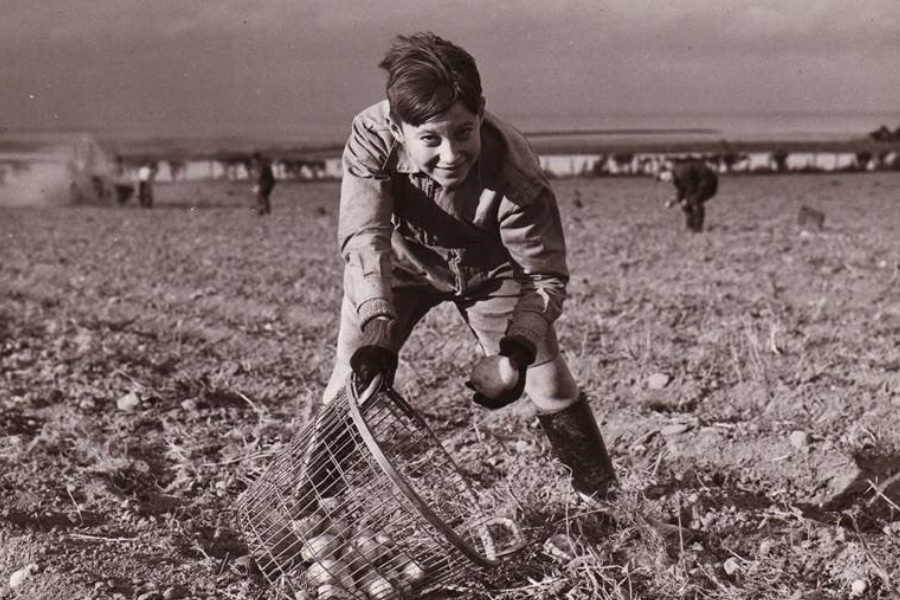
With flour rationed into near extinction, potato mash became an unlikely pastry hero. It was mashed, mixed with scant flour, and squashed into makeshift crusts.
Filled with anything remotely edible—veg, cheese, mystery leftovers—it baked into a soft, starchy hug. Golden brown wasn’t guaranteed, but survival was.
It tasted like desperation with a hint of salt. But it held together pies, which meant it held together morale too.
Did You Know? 🤓💡
Potatoes were the unsung heroes of WWII kitchens—cheap, filling, and un-rationed. From British pies to American casseroles, spuds showed up everywhere, proving carbs were a wartime ally too.
Rice and Raisin Pudding
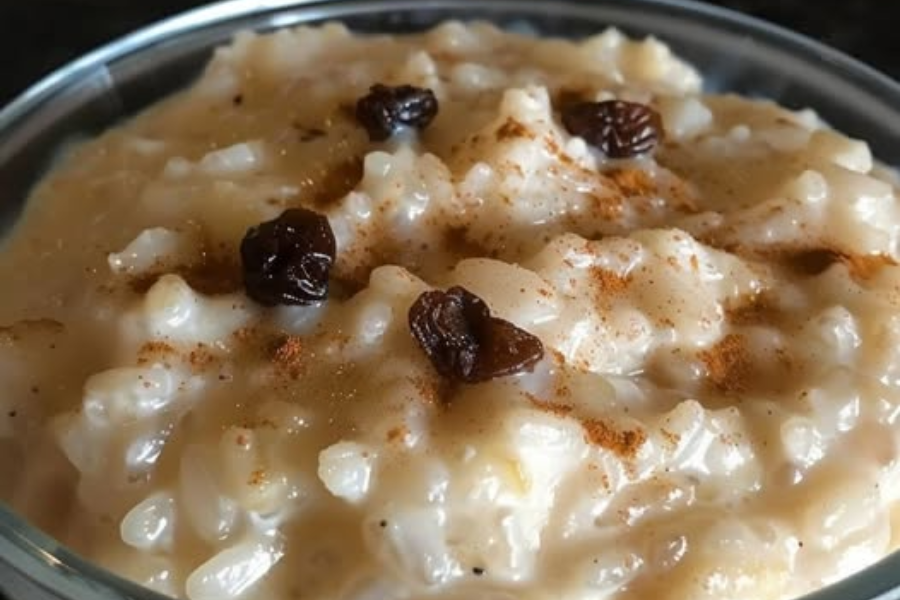
Rice stretched further than flour, so sweet puddings like this were budget-friendly and morale-boosting. Raisins added just enough sugar hit to qualify as dessert.
Made with water, dried milk, and a little margarine, it was boiled or baked until thick enough to require a spoon and some resolve.
Warm, creamy, and often cinnamon-dusted, it was a favorite among kids and ration-weary adults clinging to anything resembling a treat.
Did You Know? 🤓💡
With sugar and sweets scarce in WWII, dessert lovers had to improvise. Enter Rice and Raisin Pudding—a thrifty, ration-friendly treat that proved desperate times spark sweet creativity.
Mock Chicken Legs

Why eat chicken when you could shape ground beef, veal, or liver onto sticks, bread it, and pretend it once clucked? Innovation met impersonation here.
These “legs” were seasoned, shaped around skewers, then fried or baked until crispy on the outside and questionably moist inside.
They didn’t taste like chicken, but they looked like it—at least from across the kitchen in low lighting. Wartime illusion at its finest.
Did You Know? 🤓💡
Mock Chicken Legs were boosted by A.C. Legg, a spice company from Alabama. In the 1940s, they sold seasoning blends and skewers so folks could craft fake drumsticks when real chicken was a rationed luxury.
Mock Goose
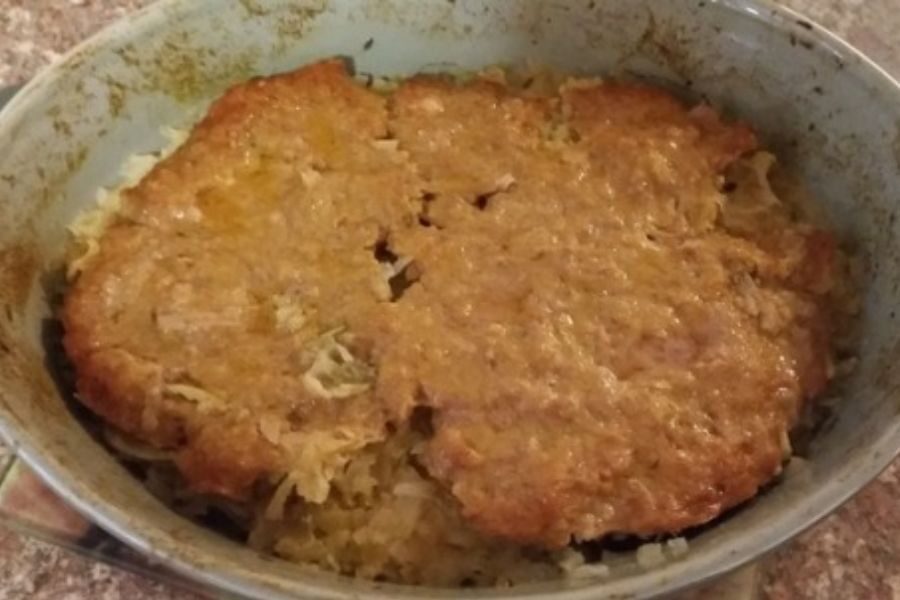
No actual goose, no poultry at all—just lentils, apples, onions, and breadcrumbs pretending they’d once waddled near a pond. Meatless meals were more necessity than choice.
Seasoned with sage or herbs (if available), this loaf was baked into a vaguely roast-like shape. It sliced easily, which is more than can be said for its dignity.
Mock Goose was about stretching wartime ingredients into a centerpiece. The result was more “seasonal stuffing” than “festive fowl,” but hey, it was warm.
Did You Know? 🤓💡
Mock Goose became the wartime dinner table’s ultimate catfish—served with the pomp of a roast but hiding zero poultry. It showed just how far British home cooks would go to fake a feast and keep spirits up with nothing but imagination.
Carrot Cookies
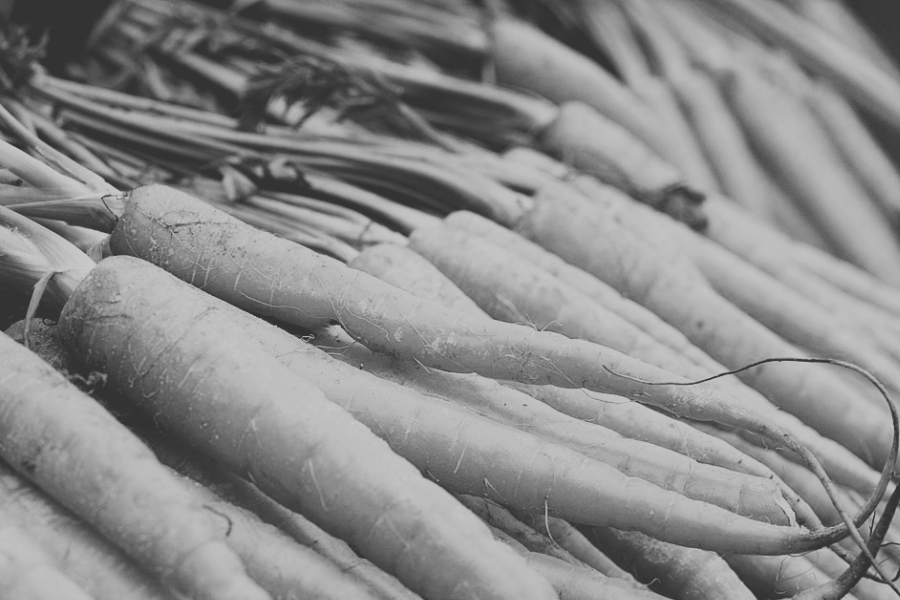
When sugar was scarce and sweets became legend, grated carrots stepped in as a wartime substitute for sweetness. Enter: the weird, orange, kinda-sweet carrot cookie.
Carrots added moisture and color while precious sugar ration coupons bought just enough sweetness to fool exactly no one. Sometimes oats joined in for body.
They weren’t delicious, but they were a treat, technically. And in wartime, technically edible counted as a win.
Did You Know? 🤓💡
During WWII, carrots became a ration-time superstar—plentiful, homegrown, and naturally sweet. Pulled from victory gardens across America and beyond, they snuck into everything from stews to “desserts.”
Eggless Mayonnaise
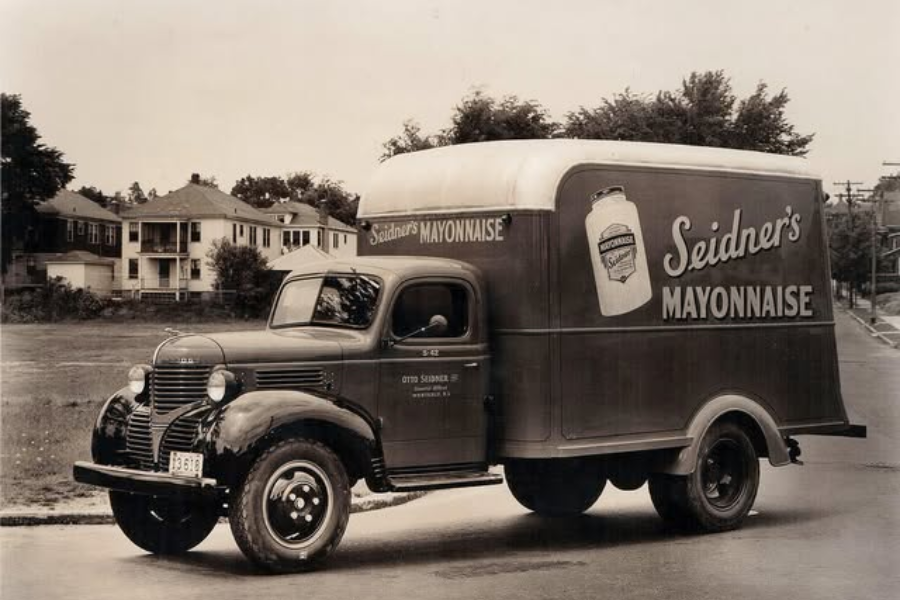
With eggs rationed down to a luxury, mayo had to improvise. This version mixed oil, vinegar, mustard powder, and prayer to replicate something vaguely spreadable.
Thickened by whipping and sheer wartime willpower, it was tart, slick, and probably not what your sandwich asked for.
Used mostly on wartime salads or bread with attitude, this mayo was less condiment, more conversation starter: “What is this, exactly?”
Did You Know? 🤓💡
Eggs were rare in WWII not because hens went on strike—but because shipping fresh ones to troops took priority. Back home, folks made do with powdered “egg-ish” substitutes.
Potato Doughnuts
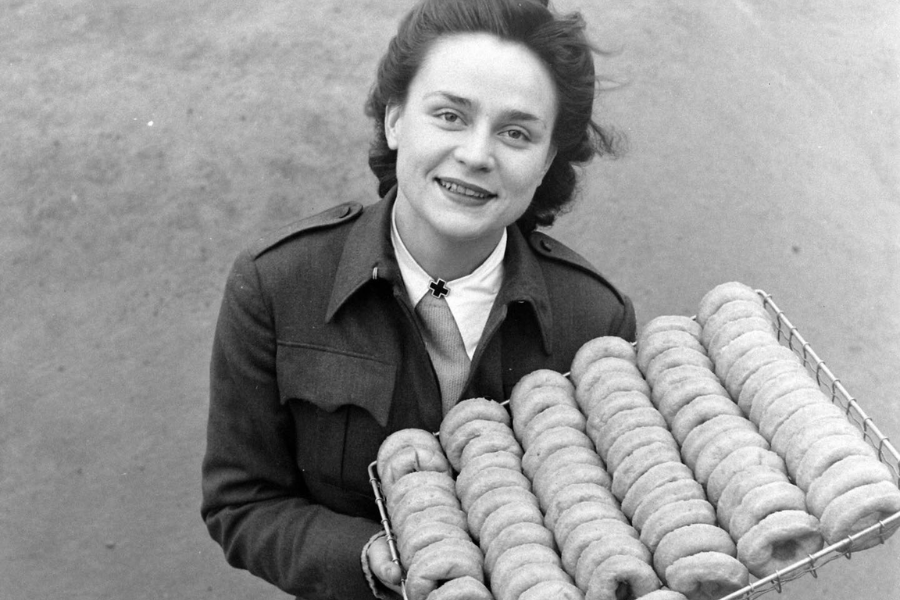
Flour was rationed, but potatoes weren’t. Home cooks slipped mashed potatoes into doughnut batter to stretch ingredients and get just a little post-breakfast dopamine.
They were deep-fried, coated in sugar (if you had some left), and eaten fast, before your conscience or rations caught up with you.
Softer and denser than regular doughnuts, they were more filling than fun—but during war, fried anything was practically therapy.
Did You Know? 🤓💡
Potato doughnuts—later popularized as Spudnuts by brothers Al and Bob Pelton—traced back to German immigrant recipes, getting supercharged in the 1940s as a clever, flour-saving delight.
National Loaf
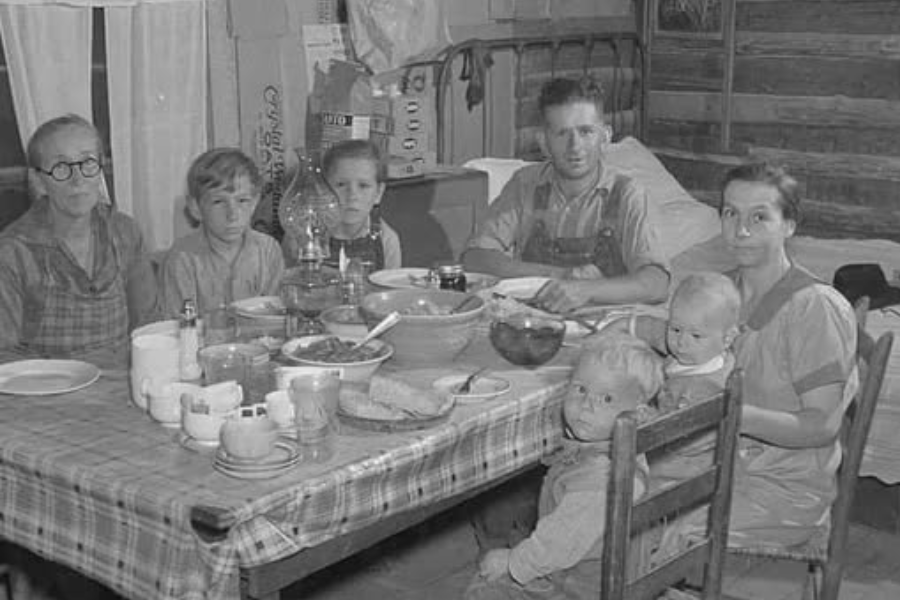
Mandated by the British government, this wholemeal bread was denser than a foggy Tuesday in Liverpool. It used nationalized flour and was mandatory for everyone’s crust quota.
Packed with calcium and fiber, it turned every sandwich into a chewy, gray workout. White bread was banned, joy was implied to follow.
It was less about pleasure, more about nutrients and dental strength. But it filled bellies, and that’s what counted most during war.
Did You Know? 🤓💡
America’s answer to Britain’s National Loaf was Cornell Bread—boosted with soy, milk powder, and wheat germ to pack nutrition into every slice during WWII’s rationing crunch.
Jam Tarts with No Jam
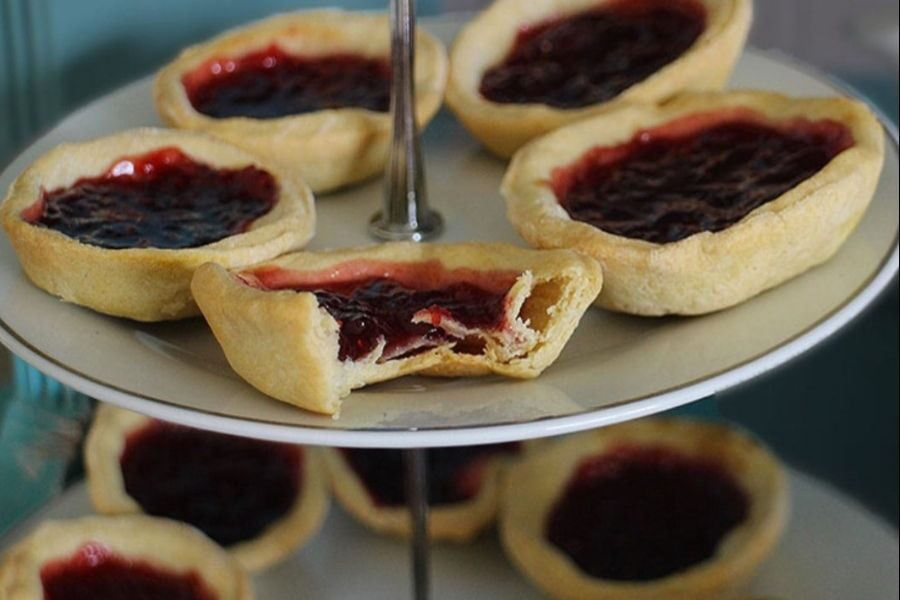
Jam was a luxury, fruit a distant dream. So boiled dried fruits or apple pulp became the tart filling—sticky enough to pretend. Almost.
The crusts used scant flour and margarine substitutes, then were filled with raisin mush, prune puree, or anything vaguely sweet from a tin.
Served warm and hopeful, they looked the part but tasted like lies. But in war, a pretty tart was better than none.
Did You Know? 🤓💡
Jam was so beloved (and scarce) it stayed rationed in Britain until 1950—five years after WWII ended. Victory was sweet, but not immediately spreadable.
Peanut Butter-Stuffed Dates
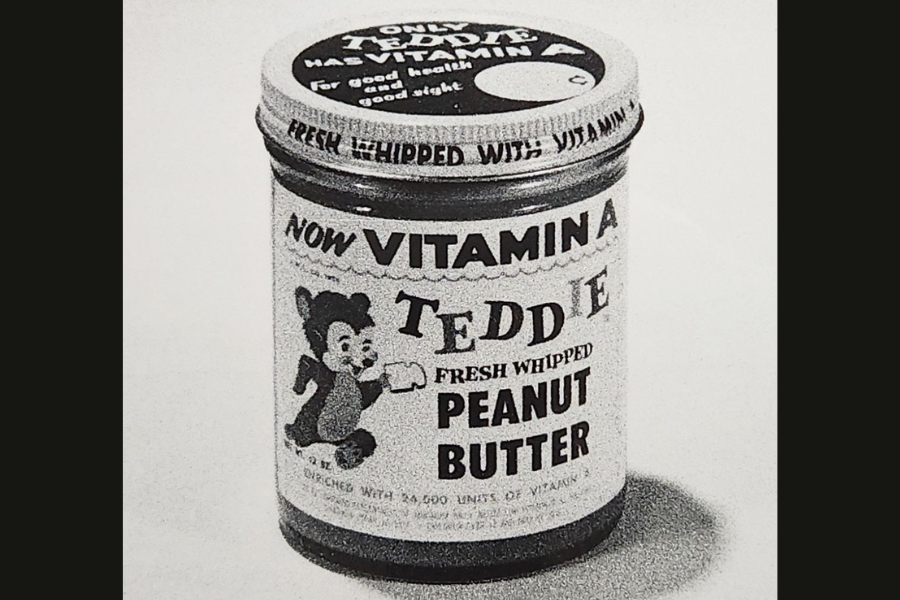
Rationing forced creativity in desserts. With sugar and chocolate scarce, dates stuffed with peanut butter became a makeshift sweet that was weirdly nutritious and oddly satisfying.
The dates were sliced open, filled with a peanut paste (if you had it), and sometimes rolled in sugar—assuming your rations hadn’t run dry.
More protein ball than candy, these bites offered energy and illusion. Kids ate them because they looked like sweets. Adults knew better.
Did You Know? 🤓💡
During WWII, dates—often imported from North Africa and the Middle East—became sugar’s chewy understudy, sweetening ration-era desserts without costing a single stamp. A sticky win for bakers!
Meatless Meatloaf
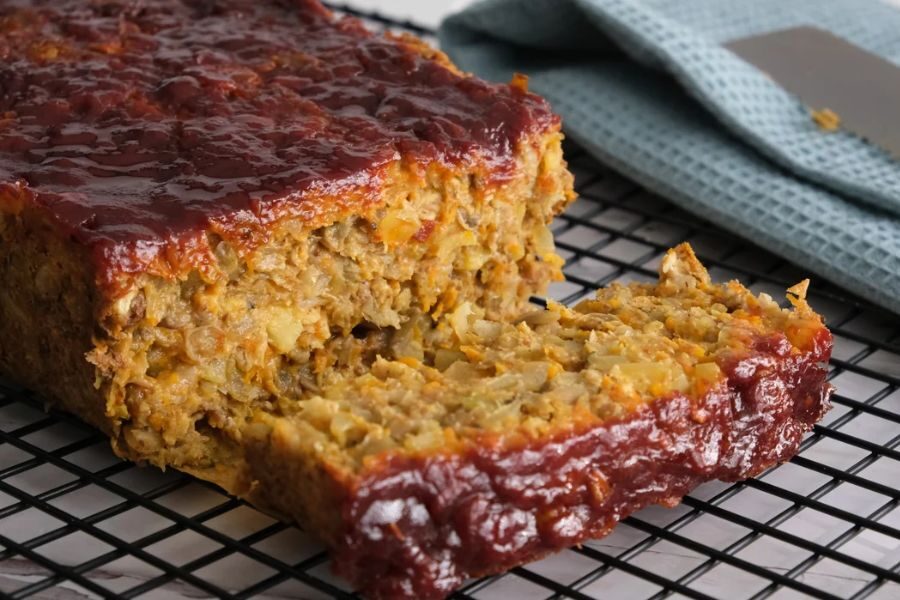
With meat rationed into vanishing, wartime cooks embraced lentils, breadcrumbs, oats, and onions to shape this oddly convincing, wholly unconvincing “meat” loaf.
Seasoned with what you could find—Worcestershire sauce, salt, herbs—it was baked into a loaf pan and sliced with grim enthusiasm.
You didn’t eat it for flavor; you ate it because it held its shape, filled your belly, and technically didn’t offend anyone.
Did You Know? 🤓💡
Meat rationing in the U.S. officially ended in November 1945, months after WWII. Victory meals had to wait—freedom was declared before the steaks hit the grill.
Oatmeal Soup
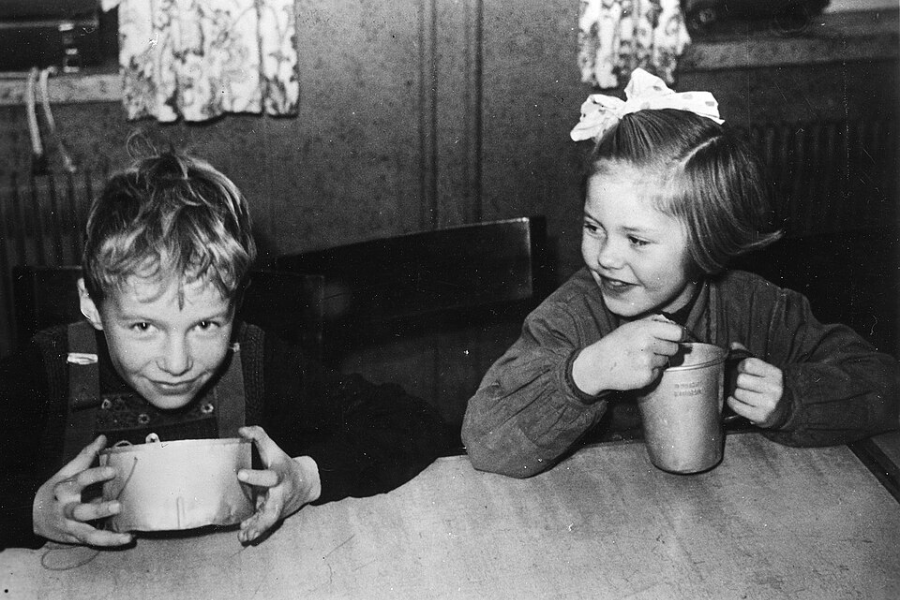
Oats were a ration book favorite: cheap, filling, and shockingly flexible. Even flexible enough to turn into a soup—though calling it that feels generous.
Boiled with water, onions, and a whisper of salt, this hot slurry offered nutrition, warmth, and the emotional weight of a thousand lost stews.
It filled the stomach and lowered expectations. Bland, beige, and better than nothing, which made it perfect for 1940.
Did You Know? 🤓💡
Oatmeal soup didn’t quite survive peacetime. After WWII, it quietly vanished from most kitchens—proving some wartime recipes were more “make-do” than must-have once steaks came back.
Bread and Butter Pudding
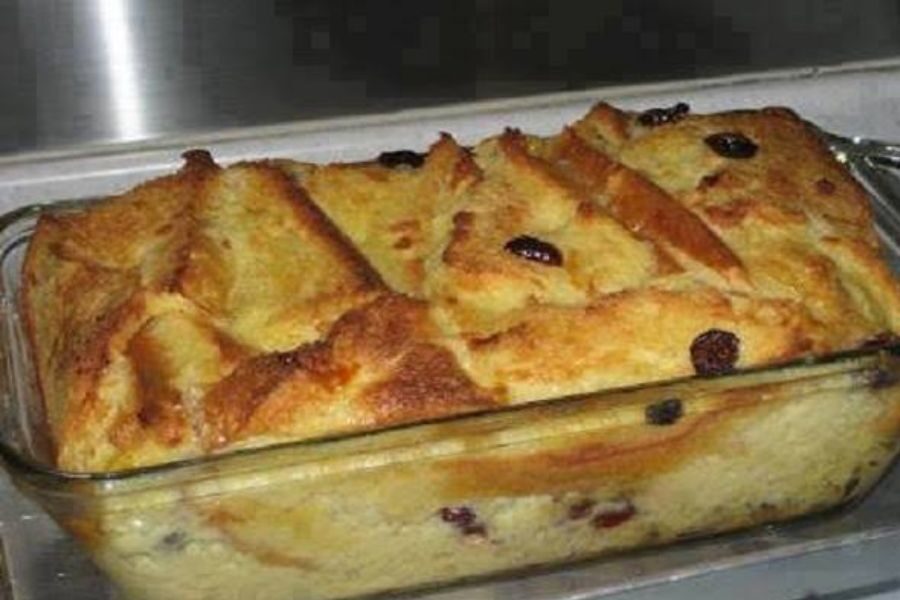
Stale bread was soaked in milk, layered with dried fruit, and baked into a pudding that said, “Waste not, whine only mildly.”
With butter rationed and sugar minimal, the real magic was in the custard: dried egg, powdered milk, and pure nostalgia.
Warm, soggy, and occasionally delightful, it transformed near-trash into dessert-ish. It didn’t sparkle, but it reminded you that dessert still existed—barely.
Did You Know? 🤓💡
The first known bread and butter pudding recipe was published by Eliza Smith in The Compleat Housewife in 1728—making stale bread surprisingly fancy centuries before WWII rationing.
Mock Banana

Bananas were as mythical as unicorns during the war, so the Ministry suggested a substitute: mashed parsnip mixed with banana essence. Yes, really.
The parsnip was boiled to oblivion, mashed to pulp, then perfumed with banana flavoring. Spread it on bread and squint—it almost looked tropical.
Kids were told it was just like a banana. Kids developed trust issues. But it filled a fruity void and boosted morale, allegedly.
Did You Know? 🤓💡
Bananas vanished in Britain during WWII, but not in the U.S.—though supplies shrank. Wartime shipping prioritized essentials, so Americans saw fewer bananas, but didn’t go full monkey-deprived.
Victory Garden Soup
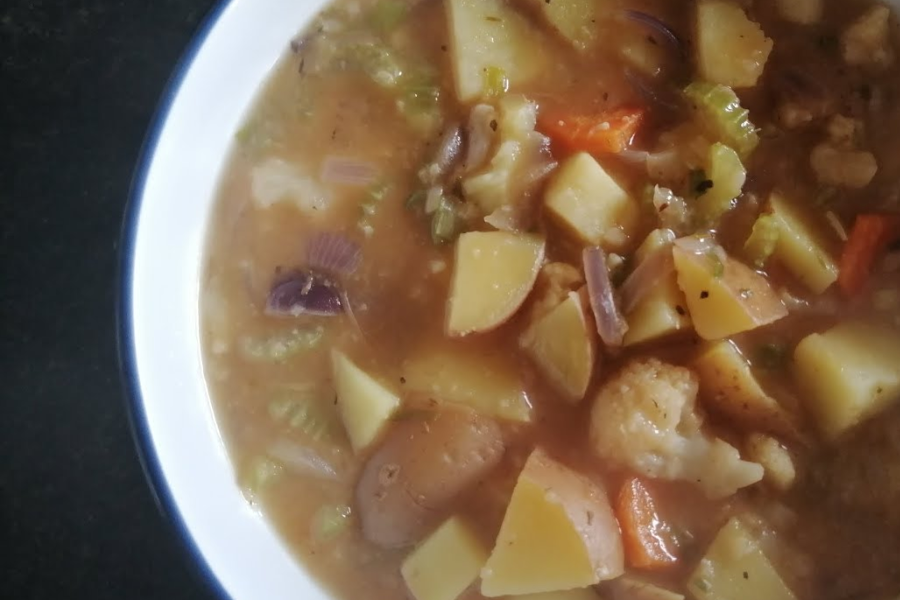
When the grocery store shelves were bare and meat was reserved for the troops, Americans turned to their backyards for dinner. Enter: soup grown by you.
This soup was a grab bag of seasonal vegetables—carrots, onions, cabbage, green beans—all boiled in a broth of salt, garlic, and personal sacrifice.
It didn’t require a recipe so much as availability. The point was to use what you had, eat what you grew, and pretend turnips were fulfilling.
Did You Know? 🤓💡
During WWII, peanuts became the protein-packed MVP of American kitchens. With meat rationed, peanut butter showed up in everything from sandwiches to sauces.
Baked Stuffed Marrow
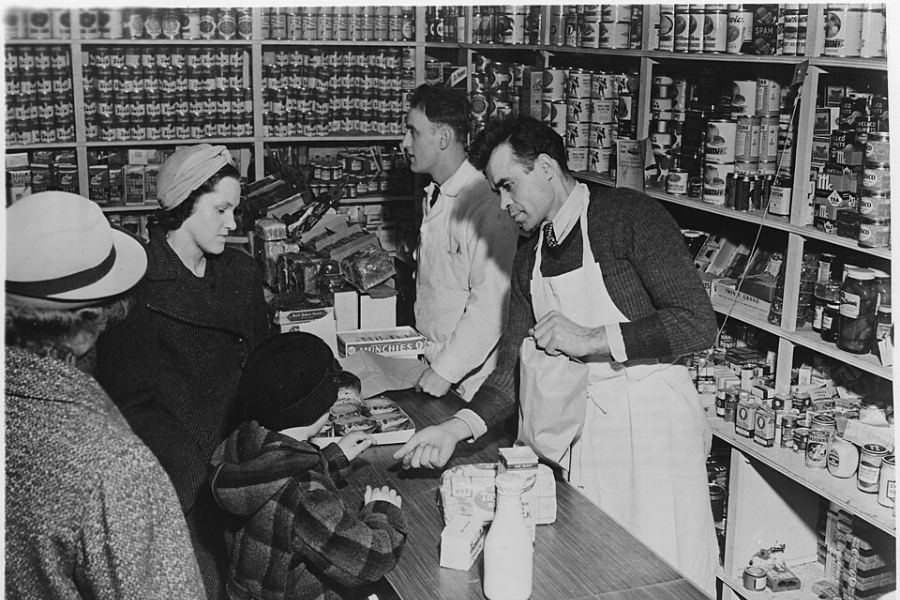
Marrow was big, bland, and available. Hollowed out and filled with breadcrumbs, onions, and wartime desperation, it was a classic main course without a star.
The stuffing often featured leftover vegetables or cheese if you had a lucky ration day. Baked until soft—sometimes mushy—it was hearty, if not flavorful.
It tried to look impressive at the dinner table. Deep down, everyone knew it was a squash-shaped cry for help.
Did You Know? 🤓💡
Marrows, originally from the Americas, became WWII meal stretchers thanks to British home gardeners. Grown in victory gardens, they bulked up everything from stews to puddings—no ration stamp required.
Carrot Marmalade
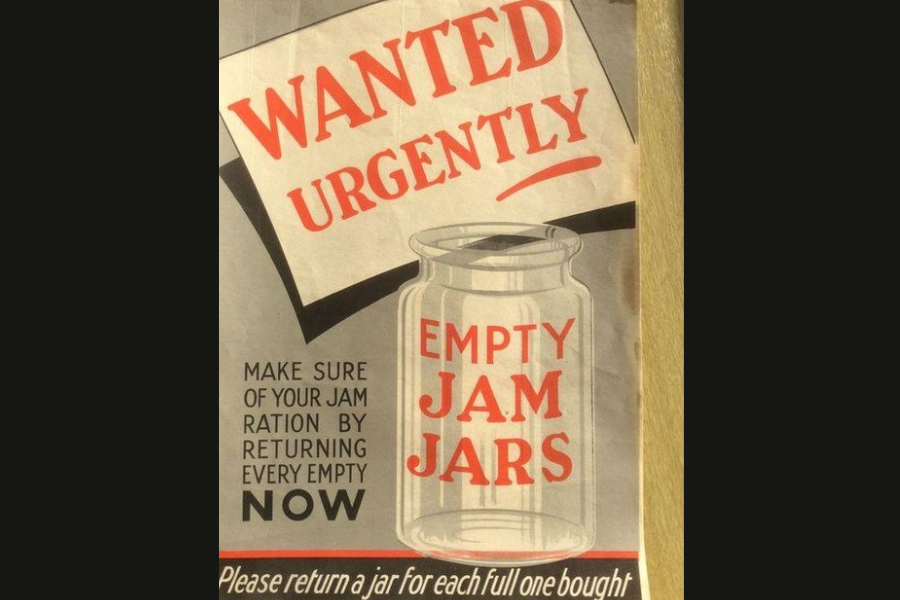
With citrus imports sunk by war, carrots stepped up as the orange hero of breakfast spreads. Carrot marmalade: bright, hopeful, and almost resembling something fruity.
Grated carrots were boiled with sugar and a squeeze of lemon—if you had one—to create a preserve-ish topping for toast or dry biscuits.
It was spreadable, vaguely sweet, and got you through the morning. Plus, it matched your gas mask bag for that full orange aesthetic.
Did You Know? 🤓💡
Carrot marmalade wasn’t just a kitchen experiment—it was officially sold and promoted by Britain’s Ministry of Food under their “Dr. Carrot” campaign during WWII, turning surplus carrots into a jammy orange substitute.
Dried Egg Omelette
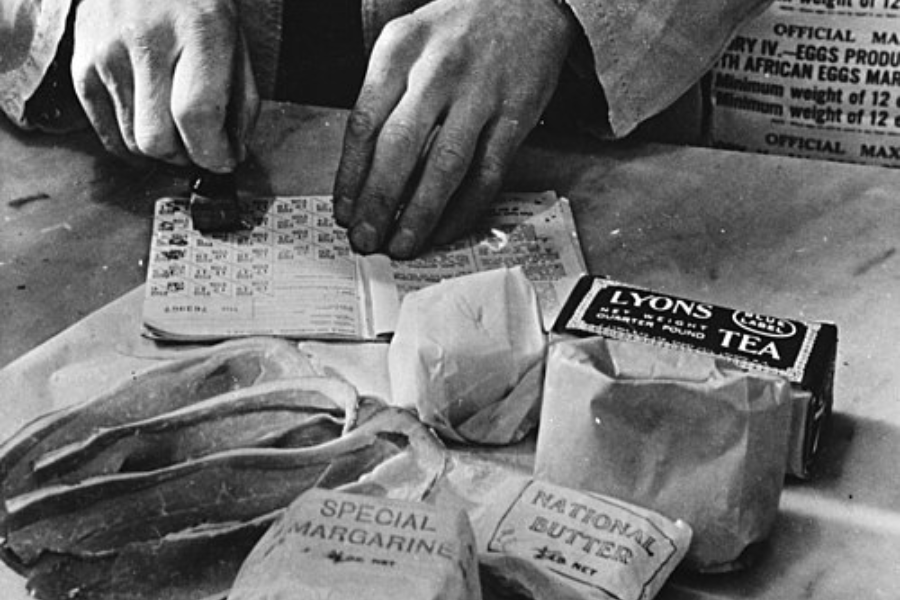
With real eggs rationed to fairy tale status, powdered eggs became a staple. They looked like sulfurous dust and cooked into something egg-ish. Technically.
Whisked with water and salt, the mix foamed up, then set in the pan like a rubbery yellow badge of perseverance.
It didn’t taste like eggs, but it fit on toast and didn’t kill you. And that’s all a wartime breakfast really needed.
Did You Know? 🤓💡
Marrows, originally from the Americas, became WWII meal stretchers thanks to British home gardeners. Grown in victory gardens, they bulked up everything from stews to puddings—no ration stamp required.
Apple Brown Betty

This humble dessert made stale bread and mealy apples look like an intentional recipe. Cinnamon-spiced crumbs and fruit baked into a layered, golden-brown “treat.”
Evaporated milk added creaminess if you had it, but mostly it was dry bread dressed up in baked nostalgia and powdered sugar.
It smelled like home and hope. And if you closed your eyes while chewing, it nearly tasted like something made on purpose.
Did You Know? 🤓💡
Apple Brown Betty, dating back to 1864, got its wartime comeback in WWII thanks to its thrifty ingredients. With bread scraps and apples, it was dessert without ration guilt.
Spam Fritters
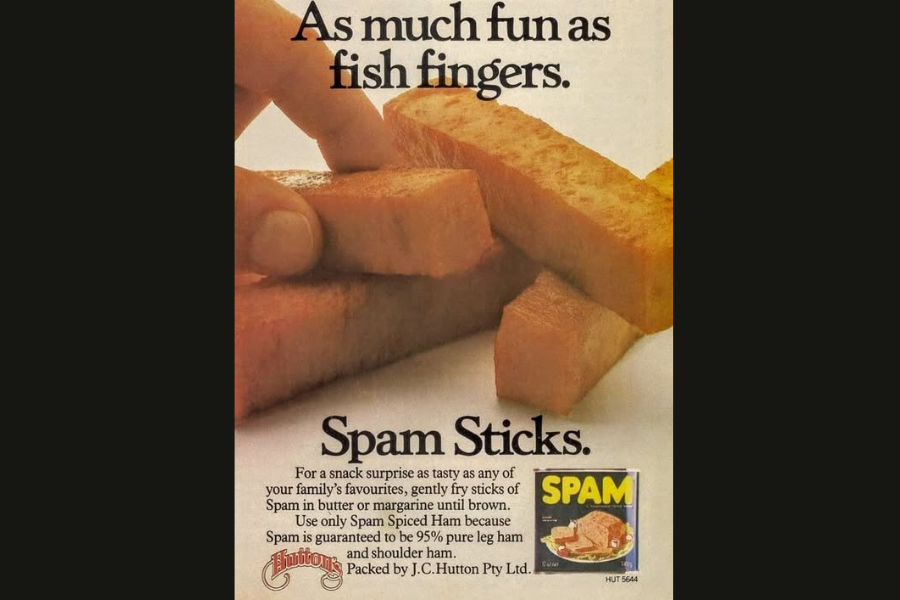
Spam was wartime meat royalty—salty, shelf-stable, and unsettling. Sliced, battered, and deep-fried, it became fritters: crunchy outside, squishy mystery inside, and thoroughly efficient.
The batter was made from flour and water, seasoned if luck struck. The goal was golden crispness hiding pink protein goo.
Served hot, it almost passed for fish and chips—until you bit in and remembered it was government-issued meat from a tin.
Did You Know? 🤓💡
Spam fritters—battered and fried slices of Spam—were born in WWII Britain when fish ran out and cooks needed a meaty fix. Though Spam itself was American, these fritters were a UK invention.
Potato Scones
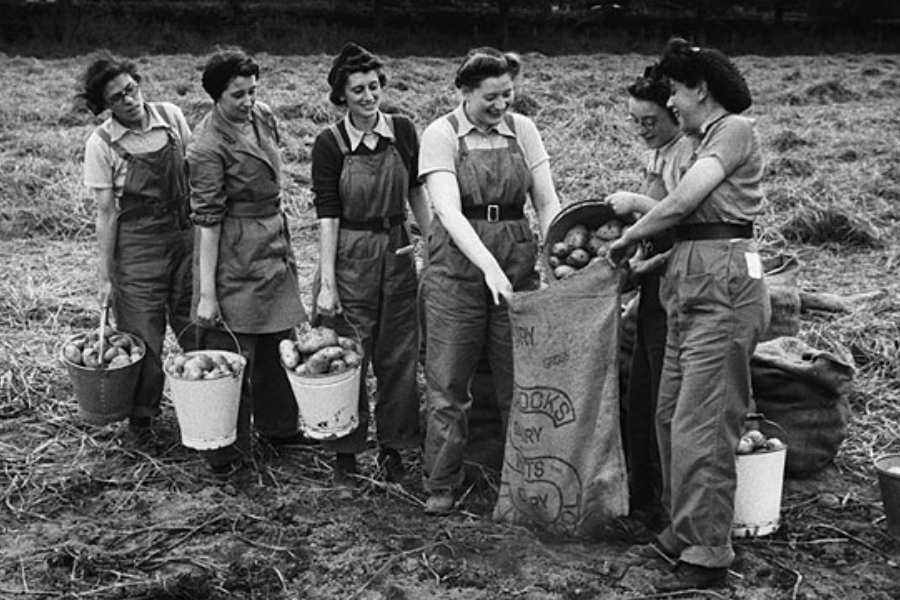
Potatoes were the MVP of rationing—so why not for breakfast too? Mashed spuds combined with flour, fried until golden, and suddenly you had a “scone.”
Lightly browned on a griddle, they were warm and filling, a rare moment of comfort between powdered eggs and dried milk disasters.
Best eaten with butter or jam—if you could spare the coupons. Otherwise, they were lovely with a big sip of imagination.
Did You Know? 🤓💡
Potato scones (aka tattie scones) aren’t credited to a single inventor—instead, they emerged over time, especially in Scotland, where home cooks turned leftover mash into griddle-cooked flatbreads by the early 20th century.
Liver Loaf
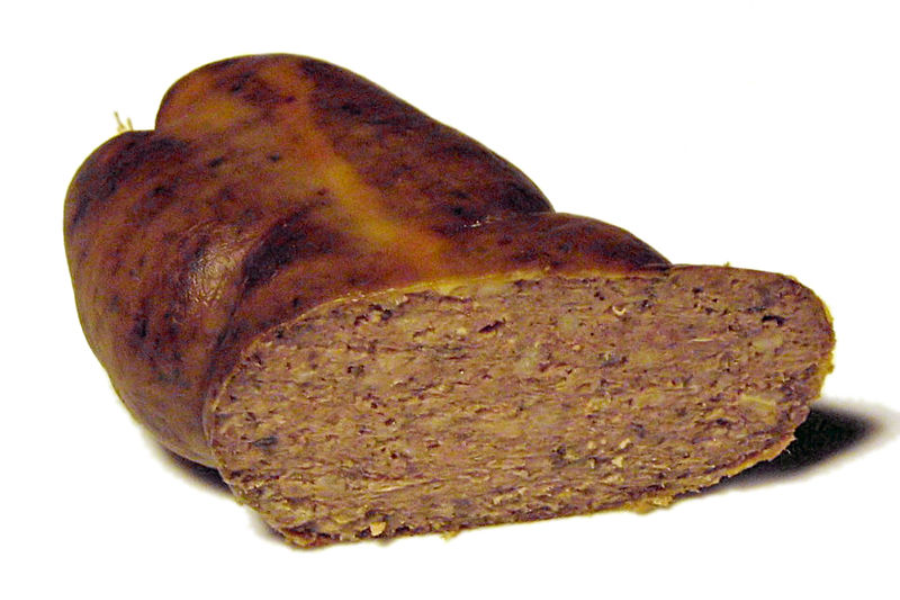
Organ meat was more available than muscle meat, so liver got loafed—mixed with oats, onions, and herbs, then baked into a block of iron-rich penance.
Sliced and served cold or hot, it was dense, oddly metallic, and only truly beloved by people who already liked chewing through shoe leather.
Nutritious and noble, liver loaf wasn’t popular. But it was affordable, protein-packed, and as hearty as it was haunting.
Did You Know? 🤓💡
Liver surged in popularity during WWII because it was nutrient-rich, especially in iron and vitamin A, and didn’t require ration coupons. Cheap, available, and healthy—it was wartime “superfood” by default.
Cabbage and Potato Gratin
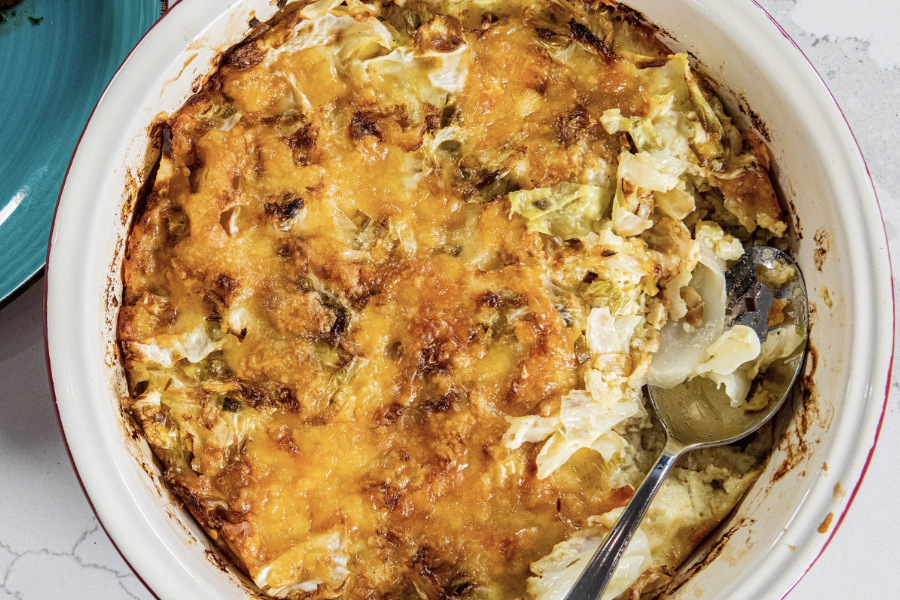
Layers of cabbage and potatoes, baked in a sauce made from milk substitute and survivor’s guilt. No cheese, no crust—just sheer willpower.
It was baked until soft and slightly brown on top. The cabbage mellowed, the potatoes clung to dignity, and the “gratin” label did a lot of work.
Wartime lasagna this was not. But it was hot, shareable, and technically counted as both veg and starch. That’s a ration win.
Did You Know? 🤓💡
Casseroles like Cabbage and Potato Gratin ruled WWII kitchens—they stretched ingredients, used unrationed staples, and fed whole families cheaply. One dish, minimal meat, maximum wartime efficiency.
Breadless Sandwich
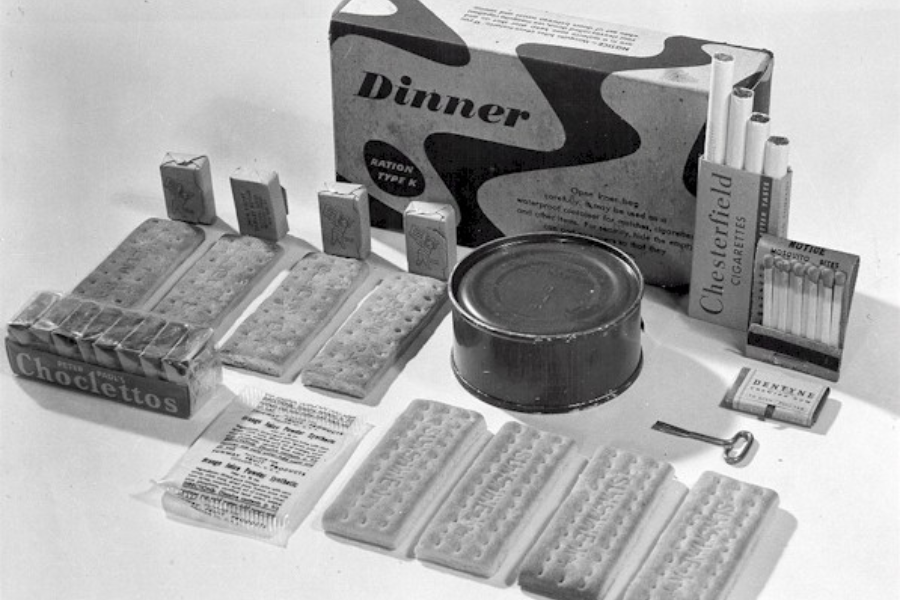
No bread? No problem. Just shove your filling between lettuce leaves or crackers and call it a “sandwich.” It wasn’t, but nobody had time to argue.
Common fillings included egg substitute, meat paste, or anything that could be mashed and spread. Crunch was optional. Regret was not.
The illusion worked best if you closed your eyes and ate quickly. Also great for guilt-free dieting, if despair counts as a weight loss strategy.
Did You Know? 🤓💡
During WW2, crackers—especially Ritz—became a WWII pantry hero. Nabisco even printed a mock‑apple‑pie recipe on the box, and crackers featured in U.S. K‑Rations as bread substitutes.
Cheese Dreams
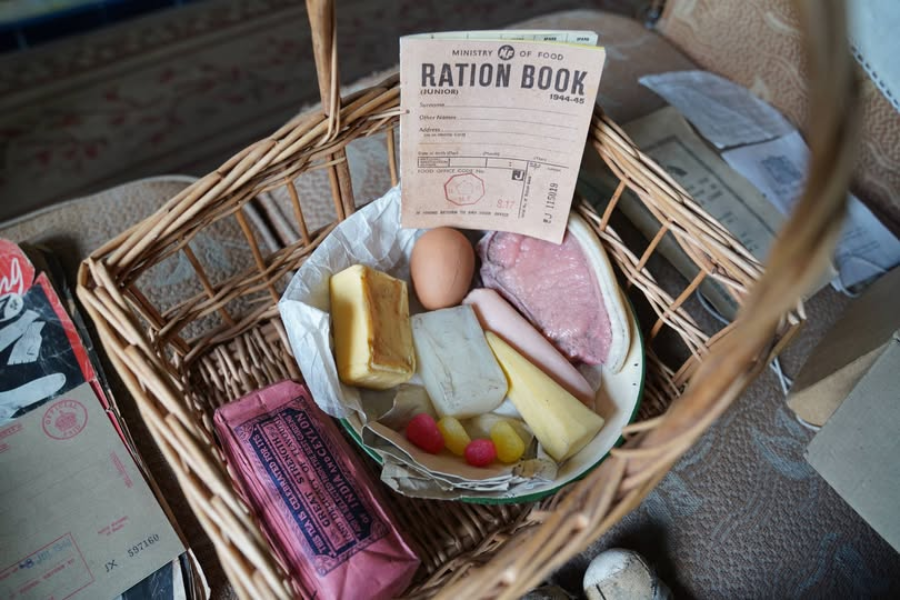
Cheese was precious, but rationing allowed just enough to melt. Enter the open-faced toastie: bread, cheese, and an oven. Call it lunch, call it a dream.
Toasted until bubbly and lightly scorched, it was gooey in the middle, crisp at the edges, and shockingly comforting for a two-ingredient miracle.
They were a bright spot on ration menus—tiny bites of warmth, nostalgia, and dairy-based optimism on a slice of stale bread.
Did You Know? 🤓💡
In the U.S. during WWII, cheese was rationed because milk production was diverted to make dried milk and butter for troops. American kitchens got creative—with less cheddar and more elbow grease.
Vegetable Pasty
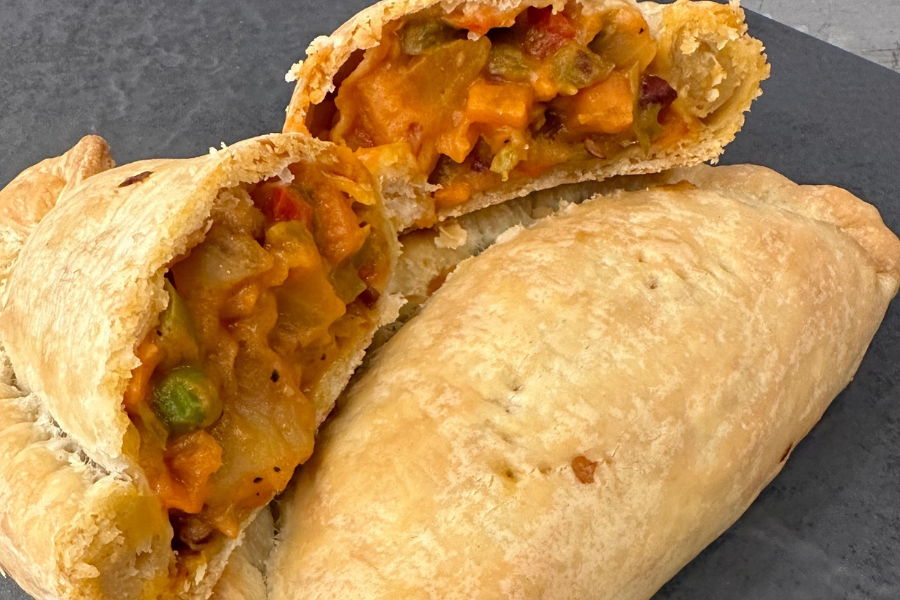
With meat out of the question, the British pasty adapted with root vegetables, onions, and dreams of beef. Carrots and potatoes took center stage, awkwardly.
Wrapped in a crumbly, often potato-based crust, it was hand-held survival food. It traveled well and didn’t require refrigeration, seasoning, or excitement.
Served hot or cold, it was filling and forgettable. But during the war, it qualified as both a meal and a minor miracle.
Did You Know? 🤓💡
Wartime veggie pasties didn’t disappear with ration books. After WWII, Brits kept the habit alive—transforming thrifty vegetable fillings into the savory pies now adored in bakeries across the UK.
Fish Cakes (with a hint of fish)
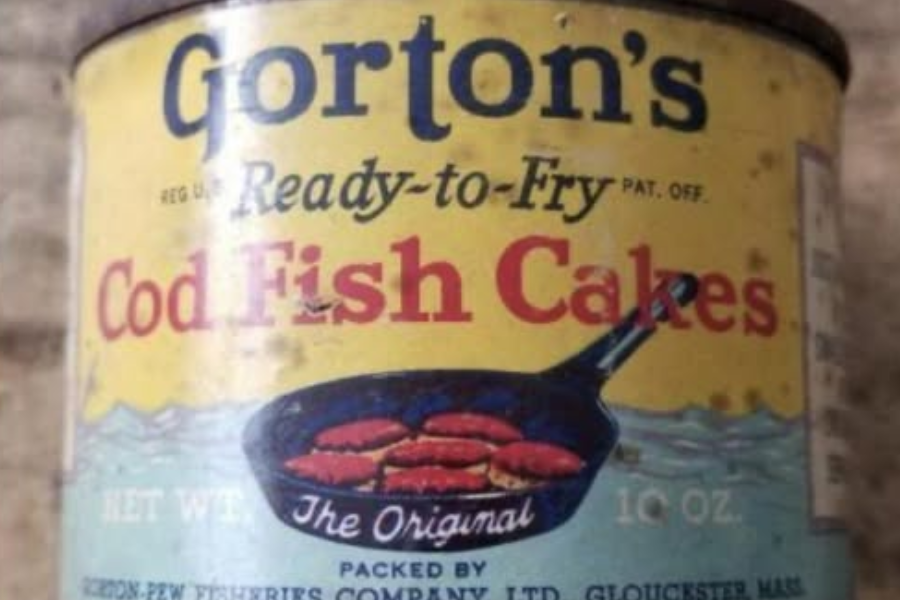
Fish was rationed, so it got diluted like wartime tea. Mashed potatoes, breadcrumbs, and a token flake of cod became the “fish” in fish cakes.
The cakes were pan-fried until golden and hopeful. If parsley or onions were added, it bordered on gourmet by 1942 standards.
They looked like fish cakes, smelled vaguely like the sea, and filled your belly. That’s more than you could ask from a rationed recipe.
Did You Know? 🤓💡
Gorton’s “Ready-to-Fry” cod became a wartime hero in the UK. Sold by American company Gorton’s (founded 1849 in Massachusetts), these breaded cod fillets offered a crunchy, budget-friendly protein boost on both sides of the Atlantic.
Treacle Tart
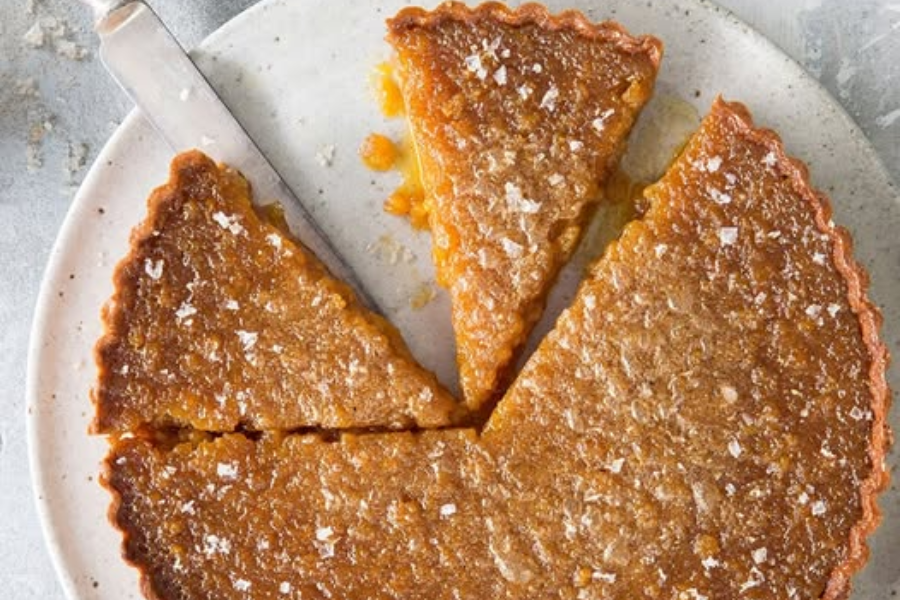
Golden syrup, stale breadcrumbs, and a splash of lemon—that’s all you needed for this sticky, ration-approved dessert with the chew of industrial adhesive.
With flour limited, the crust was often thin and brittle, but the filling did the heavy lifting—sugar rationing willing.
Treacle tart stuck to your teeth, your plate, and your soul. It was messy, sugary, and proof that sweetness wasn’t entirely extinct in wartime.
Did You Know? 🤓💡
In the U.S., treacle tart wasn’t widely known during WWII. Instead, Americans leaned into pies made with corn syrup or molasses—similar substitutes for scarce sugar.
Ration Chocolate Cake
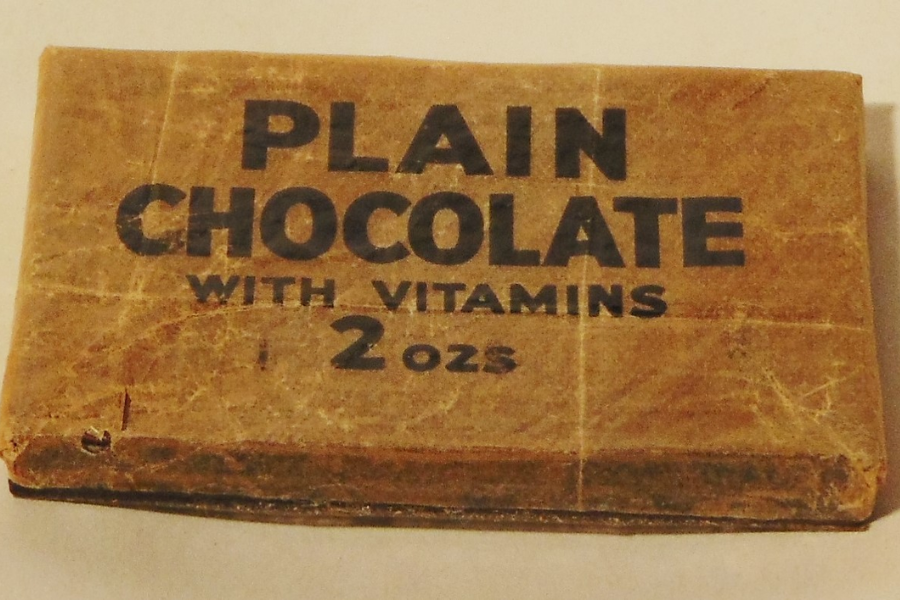
No eggs, no butter, no milk—and yet, cake! Cocoa powder, vinegar, and baking soda combined with sheer grit to make dessert possible under duress.
It was moist-ish, dense, and occasionally flavored with dried fruit or jam, depending on what survived your pantry purge.
Topped with mock cream or powdered sugar, it passed for real cake in dim lighting. A rare wartime win for chocolate lovers.
Did You Know? 🤓💡
Chocolate was scarce during WWII because cocoa imports were limited and most supplies were reserved for military rations. Soldiers got the sweet stuff—civilians were left with cravings.
Mock Cream
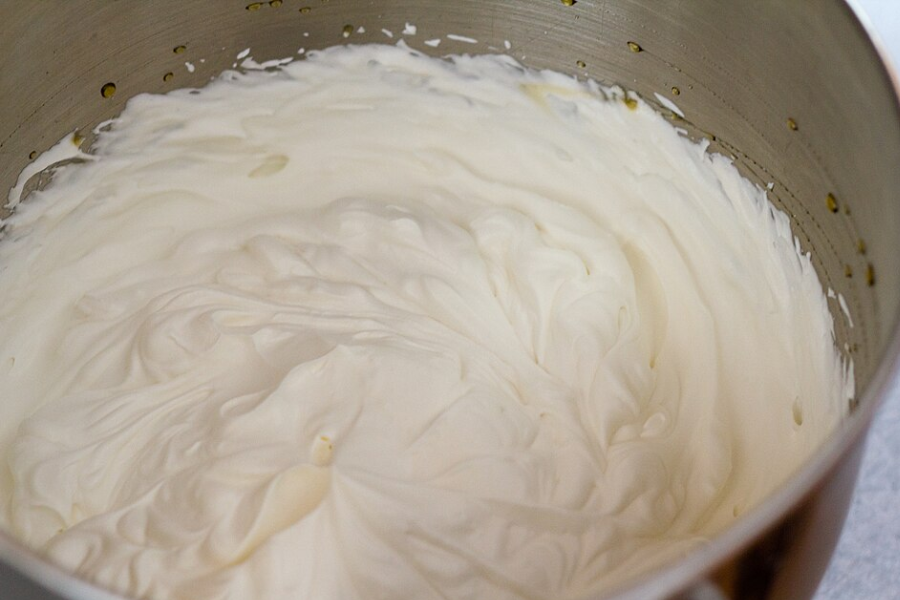
Dairy was rationed harder than air raids, so cream was replaced with margarine, sugar, and furious whisking until it vaguely looked like dessert topping.
Sometimes, a splash of milk or essence of vanilla added authenticity. But flavor took a backseat to texture: slick, smooth, and morally confusing.
Used in cakes or sandwiches, mock cream proved you could fake richness with the right attitude and low expectations.
Did You Know? 🤓💡
“Mock cream” sprang up early in WWII as a clever alternative to rationed cream. It was a grassroots hack promoted through wartime cookbooks and Ministry leaflets to keep sponge cakes and tarts delightful despite dairy shortages.
Bubble and Squeak
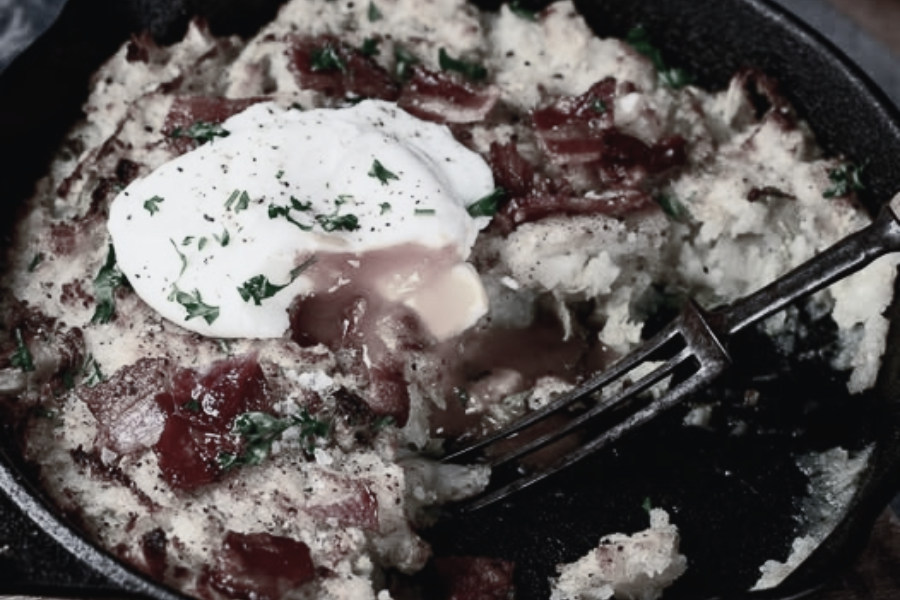
Leftovers found new purpose in this fried mash-up of cabbage, potatoes, and last night’s guilt. It bubbled. It squeaked. It kept you regular.
Pan-fried into a crisp patty, it was crunchy on the outside, soft in the middle, and smelled like boiled brassica in a trench coat.
A frugal icon, it made waste edible and reheated like a champ. You might not crave it, but you’d never throw it out.
Did You Know? 🤓💡
Bubble and Squeak dates back to 18th-century England, first showing up in Maria Rundell’s 1806 cookbook with beef and cabbage. But by WWII, meat was rare—so potatoes and cabbage became the stars.
Bovril Toast

Bovril—beefy, salty, intense—was spread thinly over toast for energy, nutrition, and that unique “meat-drink-for-breakfast” vibe only Britain could normalize.
High in protein and sodium, it was a wartime favorite. The umami punch slapped your tastebuds awake whether they consented or not.
It was love it or leave it—but since there was nothing else, most people chose love by default. Or toleration. With tea.
Did You Know? 🤓💡
Bovril was invented in 1886 by John Lawson Johnston to fuel troops with concentrated beefy goodness. By WWII, it found fame on toast—salty, spreadable comfort in bomb-shelter breakfasts.
Beetroot Sandwiches
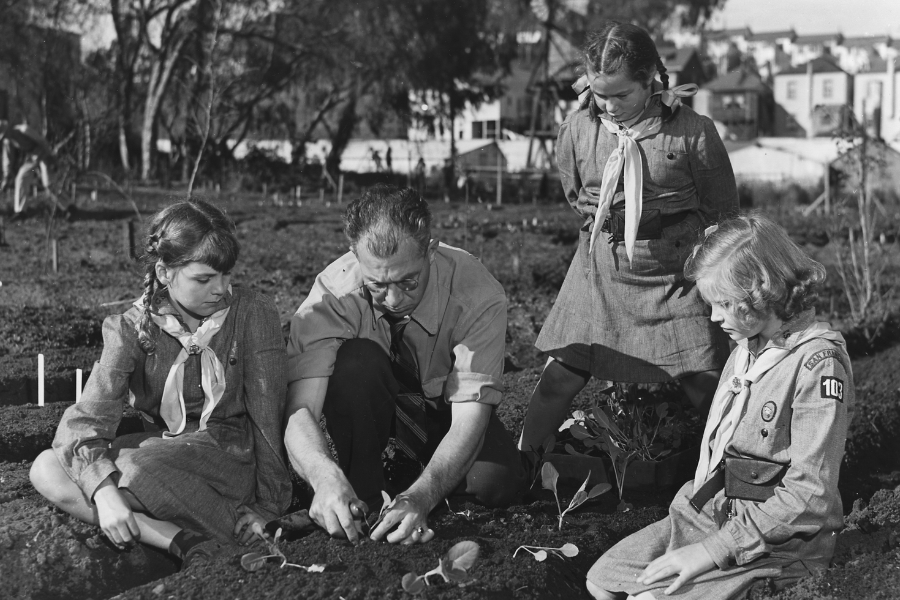
Boiled beets between slices of wholemeal bread, dripping pink juice like a horror movie and staining everything from napkins to national pride.
The beets were earthy, moist, and rarely asked for. The bread tried to hold them together but collapsed under emotional and structural pressure.
It was nutritious, vivid, and unforgettable—for all the wrong reasons. But in wartime, it counted as both lunch and fiber supplement.
Did You Know? 🤓💡
Beetroot sandwiches became popular during WWII thanks to the Dig for Victory campaign, which encouraged Brits to grow food at home. Beets thrived in backyards, parks, and allotments.
Mashed Potato Pancakes
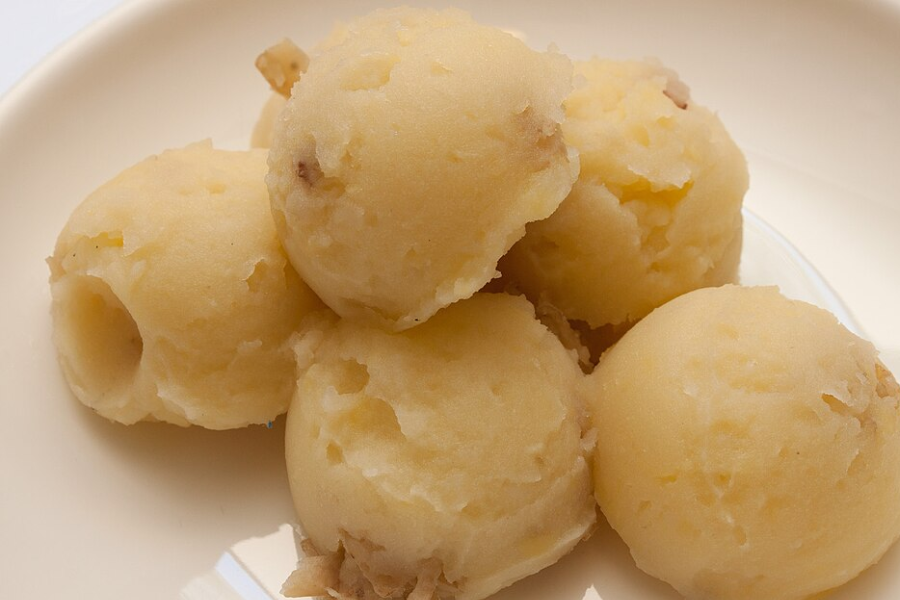
Potatoes were plentiful, so yesterday’s mash often became today’s pancakes. Mixed with flour, egg substitute, and a sprinkle of wartime ingenuity, they hit the griddle hot.
Fried until golden and slightly crispy, they were served plain or with onions, herbs, or just an encouraging stare from across the table.
They weren’t glamorous, but they filled plates, used leftovers wisely, and made a decent cushion for anything vaguely saucy or gravy-adjacent.
Did You Know? 🤓💡
During WWII, both the UK and U.S. amped up potato production. Britain’s “Dig for Victory” and America’s victory gardens turned spuds into wartime MVPs—cheap, unrationed, and endlessly mashable.
War Cake

This dessert used no eggs, milk, or butter—just dried fruit, flour, and sugar rationed so tightly you had to measure with guilt.
Boiled fruit made it moist, spices made it fragrant, and propaganda made it taste better. It was baked low, slow, and full of virtue.
Sliced thin and shared wide, it was the crown jewel of ration sweets—dense, spiced, and sturdy enough to survive shipping, chewing, or aerial bombardment.
Did You Know? 🤓💡
“War Cake” wasn’t invented by a famous chef, but arose organically from necessity—its earliest recipes date back to 1915 fundraisers by Canadian women’s groups and the Red Cross.
Savory Porridge
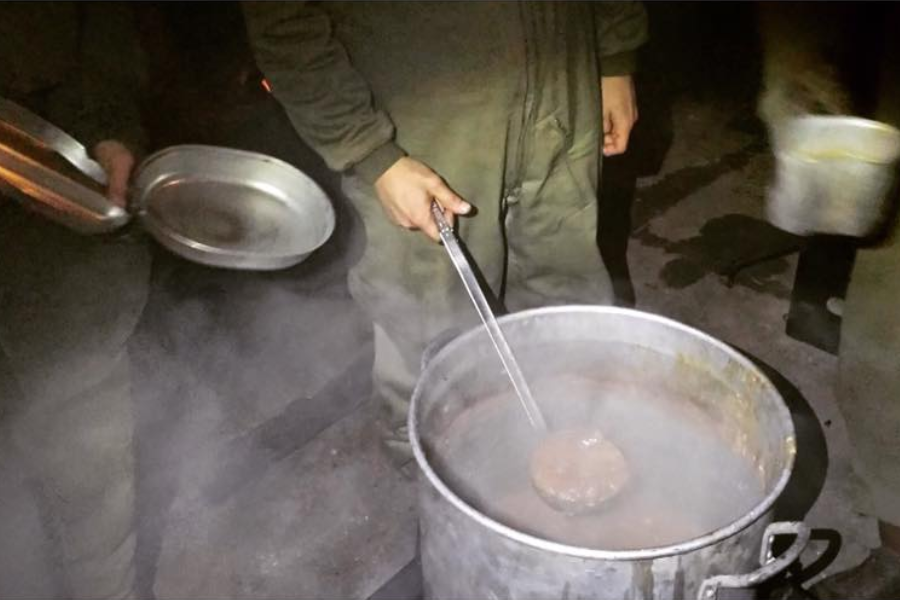
Not your grandma’s breakfast. This oat-based dish skipped sugar for onions, pepper, and anything savory you could toss in to trick it into being dinner.
Simmered until thick and soulful—or gluey and sad—it was a frugal way to turn oats into a hot meal at any hour.
Nutritious? Yes. Exciting? Absolutely not. But it filled you up, cost nothing, and doubled as wallpaper paste in emergencies.
Did You Know? 🤓💡
Savory porridge made a quiet comeback during WWII—oats weren’t just for breakfast. With meat scarce, cooks simmered them with onions, herbs, or broth, turning humble grains into hearty meals.
Carrot Croquettes
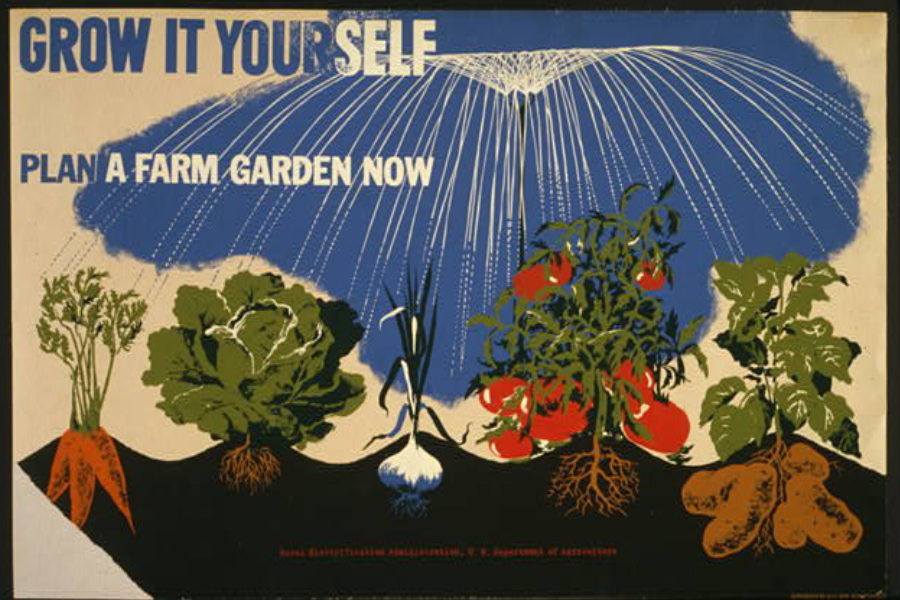
Grated carrots, mashed potatoes, and stale breadcrumbs came together in a fried shape that promised more than it delivered—but delivered just enough to matter.
Seasoned with salt or mustard powder, they were rolled into logs, crumb-coated, and pan-fried until the outside crunched slightly more than the inside whimpered.
Served with gravy or propaganda, they were a crunchy little comfort—vegetable confetti disguised as dinner.
Did You Know? 🤓💡
Carrot croquettes first appeared in WWII as part of Britain’s Ministry of Food push to use surplus veggies as sweet–savory alternatives. They mixed grated carrot, potato, cheese, and oatmeal—then fried them into crispy ration‑friendly bites.
Potato Chocolate Spread
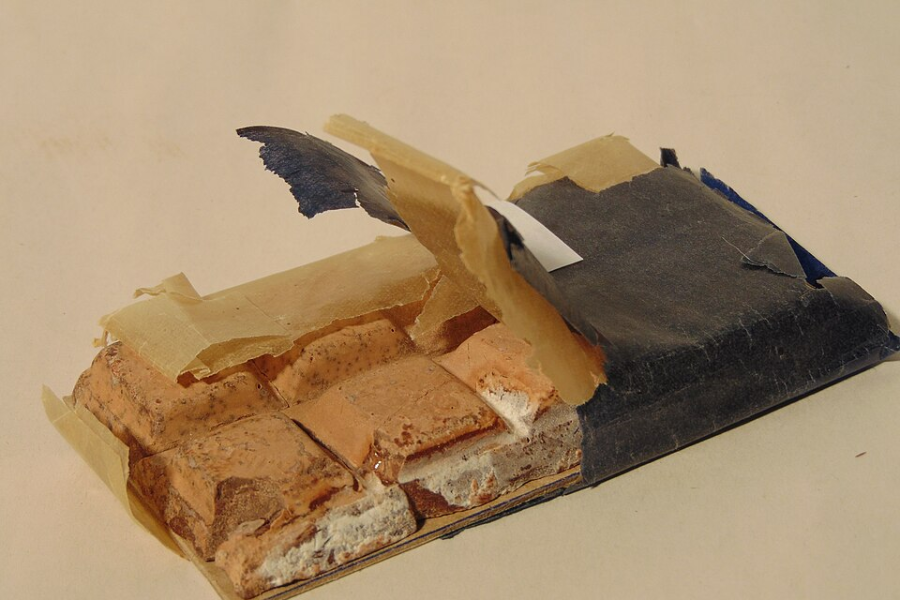
You read that right. Mashed potatoes met cocoa powder and sugar to create a sweet spread for toast that confused as much as it fed.
It was thick, dark, and oddly smooth—more convincing in texture than in taste. But it spread, and it wasn’t jam, so it counted.
A creative sugar-stretching marvel, it allowed kids to pretend they had chocolate, while adults wept softly into their crusts.
Did You Know? 🤓💡
“Potato Chocolate Spread” was concocted during WWII by Britain’s Ministry of Food to stretch limited rations. It was sold as a jam substitute to boost energy and morale at home.
Apple Sauce Meat Substitute
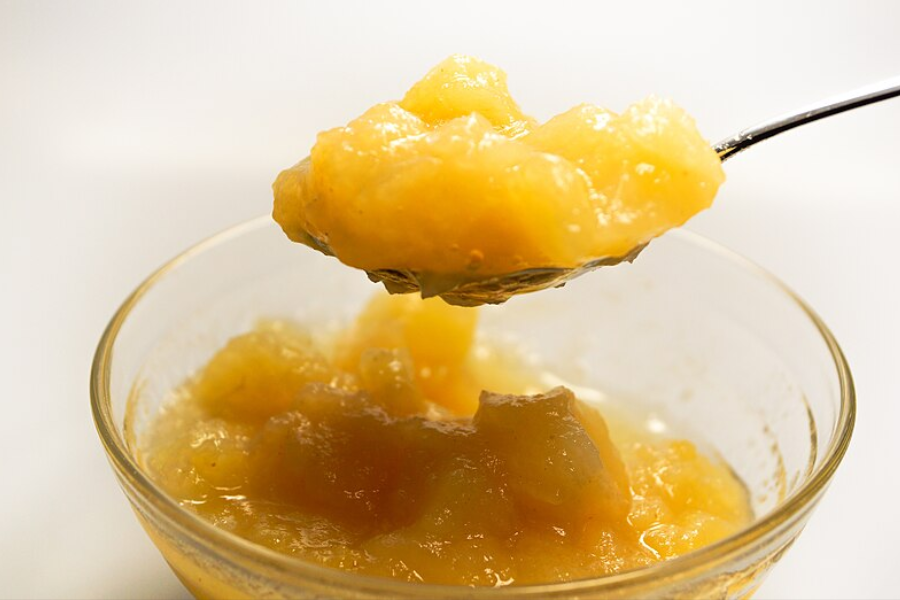
When meat ran dry, applesauce stepped in—mixed with breadcrumbs, oats, and savory herbs to form patties with… let’s call it “a vibe.”
It browned well in the pan and absorbed flavor like a desperate sponge. Apples gave it sweetness, texture, and plausible deniability.
Best served with extra seasoning, a stiff drink, and no questions. The war asked for sacrifice. This was… definitely one.
Did You Know? 🤓💡
The idea of using applesauce as a meat extender came straight from WWII-era Ministry of Food recipe leaflets in Britain. These guides suggested stirring applesauce into minced meat or meatloaf to stretch limited supplies.
Savoury Rice Ring
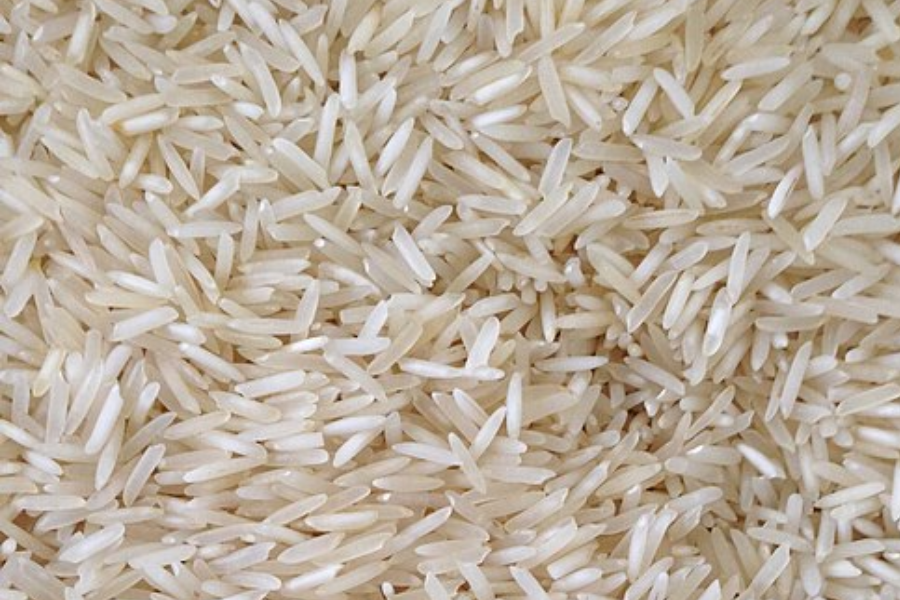
Cooked rice shaped into a mold and filled with veg, sauce, or a surprise protein nugget. Fancy presentation, plain ingredients, high emotional damage.
The ring shape was meant to make it feel like a centerpiece. It mostly felt like eating leftovers in an aggressive shape.
Held together by egg or rationed hope, it was practical, fillable, and unchewable if overbaked. Still, it looked impressive next to cabbage.
Did You Know? 🤓💡
“Savory Rice King” wasn’t a celebrity chef—it was a homemade staple from home-front cookbooks during WWII. Families stirred together rice, vegetables, broth, and minimal seasoning.
